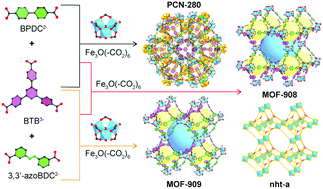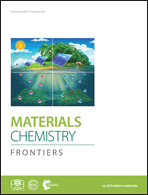Reticular control of interpenetration in a complex metal–organic framework†
Abstract
Metal–organic frameworks (MOFs) are a new generation of crystalline porous materials covering a broad spectrum of research fields due to their high porosity and the feasibility of modification of their structure. Due to their large void spaces, MOF structures tend to be more stable when the crystals are grown to form interpenetrated frameworks. Control of interpenetrated frameworks in MOFs is not only useful for various kinds of practical application but also provides insight towards understanding the reaction process and catenated behavior in MOF chemistry. In this research, we sought to investigate and successfully achieve reticular control of the interpenetration of PCN-280, a complex MOF with a 2-fold interpenetrated framework containing heterogeneity building blocks (two kinds of polytopic organic linking unit based on carboxylate), to form a new isoreticular single-frame MOF, termed MOF-908 and isoreticular MOF-909. The crystal structure and underlying network of MOF-908 and MOF-909 are proven by X-ray diffraction analysis as well as other related characterizations. Indeed, the mechanism of reticular control of the interpenetration of PCN-280 is studied in detail using density functional theory (DFT) calculations.



 Please wait while we load your content...
Please wait while we load your content...